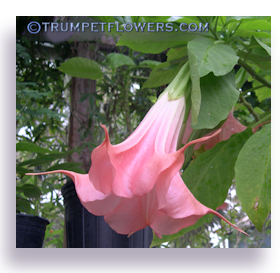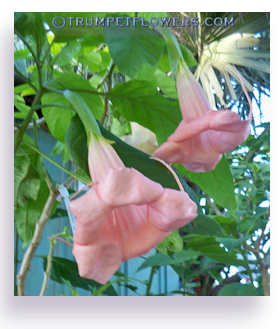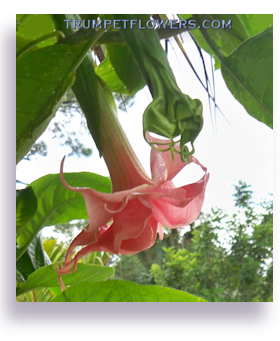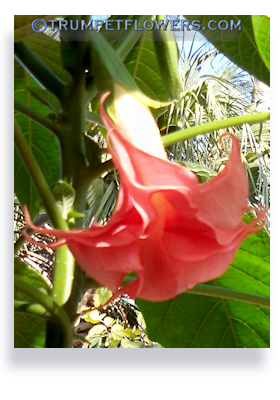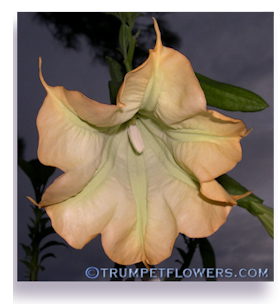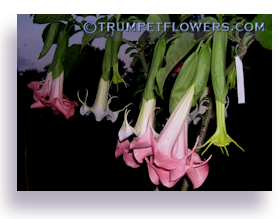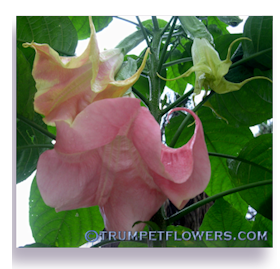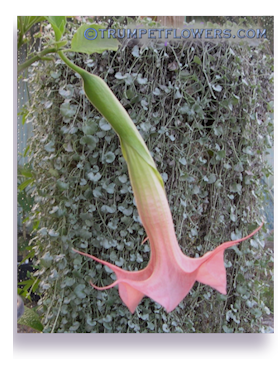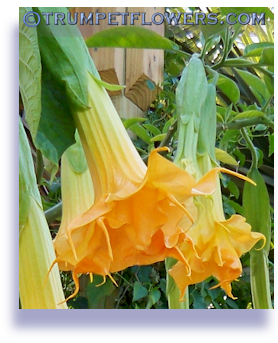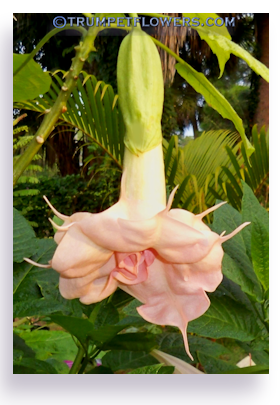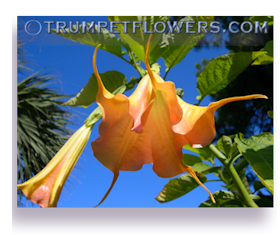S. Florida
Gardening
Get Started With Edible Landscaping
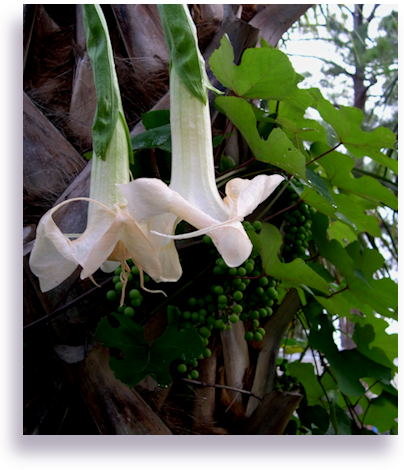 These days, edible landscaping is just plain pratical. But whether you live in the city and only have room for a windowbox, or have enough property to start a small farm, you can make edible landscaping beautiful as well as economicaly sound.
These days, edible landscaping is just plain pratical. But whether you live in the city and only have room for a windowbox, or have enough property to start a small farm, you can make edible landscaping beautiful as well as economicaly sound.
There are many edible plants that are simply beautiful to behold. With all the newer varieites out today, one can have fresh herbs on their meats and stews, and tasty, snappy homegrown peas right at their fingertips.
If you're in the city and can only spare a limited space, try growing bush variety tomatoes of many colors. They may still need a little staking, but take up much less room than their cousins, the sprawling vines that can grow over 15 feet in one season! They won't need any special treatment, just the standard amount of sunlight, water and fertilizer as any tomato, and an occassional strong hosing down to remove any bugs that might be trying to set up an invasion.
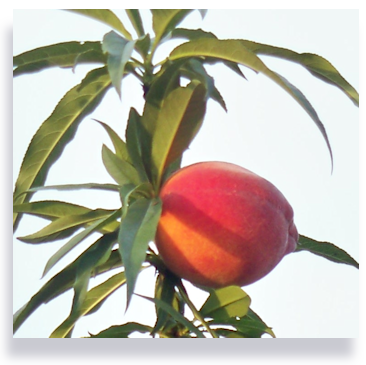 This is the first year we have had what will be a bushel of ripe, juicy peaches on our young FlordaPrince peach. We planted the young bare root tree out 2 springs ago. Very vigorous, it started setting fruit in early January and now is covered. So much so that we are going to have to remove some, lest they break the young branches under their growing weight.
This is the first year we have had what will be a bushel of ripe, juicy peaches on our young FlordaPrince peach. We planted the young bare root tree out 2 springs ago. Very vigorous, it started setting fruit in early January and now is covered. So much so that we are going to have to remove some, lest they break the young branches under their growing weight.
Taking the advice of the Nursery was a smart decision. This tree is very pest resistant, and grows quickly. We expect it to reach 6 feet in heighth by the end of the summer. It is fertilized in late winter, and again in early spring, time released.
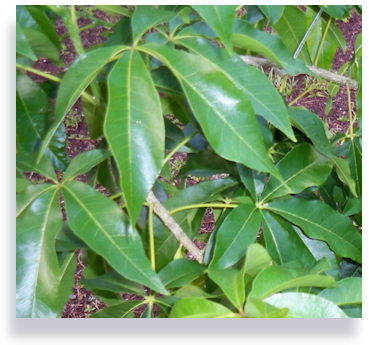 Our White Sapote tree is also getting large, and although we do not expect fruit from it this year, I hope within anotheryear or two it will bear. Proclamed to be self pollinating, I still have started some others from seed, just in case. The fruit does really taste like vanilla custard. Sadly, because it transports badly, it is not more known to northern markets.
Our White Sapote tree is also getting large, and although we do not expect fruit from it this year, I hope within anotheryear or two it will bear. Proclamed to be self pollinating, I still have started some others from seed, just in case. The fruit does really taste like vanilla custard. Sadly, because it transports badly, it is not more known to northern markets.
The leaves of this large tree also support the life cycle of the Giant Yellow Swallowtail butterfly. Their larvae, the caterpillars, look like bird droppings. This is to camoflage them from birds and other predators. Giant Swallowtails also use citrus as larval food for their young. We have two citrus trees, and each year the swallowtails choose the white sapote instead. It must just taste better.
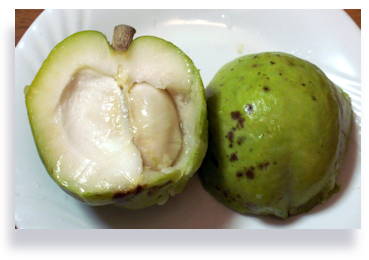 If you live in zones 9, 10, or 11, you can grow out white sapote yourselves. Most are started from seed, but a few growers in California are establishing real cultivars. I buy seed for this magnificent looking tree from Trade Winds Fruit Store. It is a bit sporadic about coming up, (if not truly fresh) but if you have patience it is surely worth the wait. Here's more on how I grow out White sapote: Care and Grow White Sapote.
If you live in zones 9, 10, or 11, you can grow out white sapote yourselves. Most are started from seed, but a few growers in California are establishing real cultivars. I buy seed for this magnificent looking tree from Trade Winds Fruit Store. It is a bit sporadic about coming up, (if not truly fresh) but if you have patience it is surely worth the wait. Here's more on how I grow out White sapote: Care and Grow White Sapote.
Our Japanese plums are also fruiting. He just picked the last of the juicy yellow fruits about 2 weeks ago. (late March). The Loquat is related to the peach, and different trees are proported to have different flavors, some sweeter, some more tart. Hubby proclaims picking them before they begin to orange up the skin, gives him the tart flavor he prefers. This plant is easy to grow from seed if it's fresh, but keeping them alive is tricky. I have done it many times, and here's a link to an entire page about our lovely fruit bearing Loquat Trees. Care and Grow Loquat.
 Bell Peppers are also a good candidate for windowboxes. Already erect, they too may need a little staking, but at the price of bell peppers today, it's worth the effort to not only grow a plant that's lovely to look at, but gives you organically grown sweet bells to grace your Italian sausage plate. And you can brag to your friends that you grew them yourself!
Bell Peppers are also a good candidate for windowboxes. Already erect, they too may need a little staking, but at the price of bell peppers today, it's worth the effort to not only grow a plant that's lovely to look at, but gives you organically grown sweet bells to grace your Italian sausage plate. And you can brag to your friends that you grew them yourself!
Besides Tomatoes and Peppers, you can grow lovely flowered Okra, rows of celery, romaine lettuce, carrots, radishes, eggplant, beans and even cabbage and kale.
If you have the room you can set out a large front yard edible garden that most will not know is able to be eaten right off the vine! In the case of actually having some yard to work with, you can move into berries and fruit trees too. Don't let the fruit nurseries fool you though. They may tell you a tree is 'dwarf' or semi-dwarf,' but believe me, from experience I can tell you that in a good 80 percent of these cases, you will still have to prune the trees into shape and conformation to keep them at a size that is desirable (and harvestable) to you. Like anything, there are exceptions.Just check the rootstock that the fruiting tree is grafted to. If it's a dwarf cultivar stock, then you will most likely end up with a true dwarf tree. But that my friends, is rare.So go ahead and order a standard size, it will usually save you money. Just learn how to prune the tree in question properly before-hand.
How to Grow Garlic
Garlic is always wonderful to have in abundance. Luckily, one of my brugmansia growing friends is a master at growing garlic. If you'd like to see a tutorial with photos and a clear explanation of how he does his, visit this page at Brugmansia Growers International: Al's Garlic Planting Time..
Start out with a rough drawing of what you have for workable space and then a list of the plants your family enjoys eating. Scale drawings are the best, they will show you exactly how much space you have, and when you look up how much space the plant will need when a full adult, you'll be able to order the appropriate number of plants for that space. Spend some of that dreadful winter sitting in front of the computer, looking at online seed catalogs and tree nurseries. Make a habit of knowing the adult size of the plant in question when you plan on making an attractive, as well as edible; lawn garden. Also note the position of the sun in relationship to where you will be placing your plants. Most fruit trees are going to want (and only fruit) in full sun. Celery grownas a border plant up next to the house not only likes a moist environment, but prefers some shade as well.
You can put an entire row of blueberries up next to the south side of your house (in a bed, of course) and in front of them grow some flowering teas like chamomile. Other plants that make excellent teas are hibiscus, loquat, camellia and rose bush. (hips) They are not only attractive, but edible!
Raised bed gardening also works in the edible landscape. If you have a sidewalk in front of your home, and the grassy stretch of 2 foot or so by 6 foot concrete bed that has to be mowed, but is otherwise useless, think about planting a standing herb garden there. Thyme grows into a lovely, woody shrub that smells delightful even when slightly brushed. The smell will waft into your home, and invite your friends. You keep the trimmings for fresh dried thyme spice.
There are many bold and attractive ways to spruce up your yard, and eat organic food from it as well. The days of the old fashioned Vicotry garden may be coming 'round again, but this time we can blend it right into the landscape...in a most beautiful way!
Our Passiflora Edulis are always fruiting now. After reaching the age of 2, they became very prolific. In mid spring through October they begin to flower. The fragrance is so strong it draws in the pollinators from everywhere around. Bees and butterflies go crazy for the nectar of these very large, beautiful passionflowers. Ants also love them, and seem to do the plants no harm.
By October, there are hundreds of delicious passionflower fruits to pick. Passionflower makes excellent eating fruit right off the vine, or you can make jellies, jams, or the ever so more expensive passionfruit juice from them. If you'd like to read more about passiflora edulis and other edible passion flower vines, try this read: Care and Grow Passionflower.
Thomcord Grape is a vinifera that has been very reliable here for me inone 10A. Back around 2011, I started 2 cultivars.They now fruit for me each late Summer, giving me boundless bunches of ripe, juciy and sweet grapes. They are easy to trellis and train, and look lovely in the edible landscape. The large leaves double as a food-source, and are great for making Greek foods that use the leaves to wrap various meat and onion mixtures for a delectable and exotic dinner. Grapes are easier to grow than you may believe. Click Here to learn more about starting your own small vineyard.
Below are just a few of the southern type edibles that can be used on large plots, lawns and/or windowboxes.
- Apple, Dorsett, Ein Sheimer, Anna cultivars
- Basil
- Blueberry, Rabbiteye, Premier, Emerald
- Blackberry, Navajo
- Garlic
- Hazel Nut, Zone 9 cultivars
- Hibiscus
- Kiwi
- Loquat
- Grape, Reliance, Thomcord, Zone 9 cultivar
- Mango
- Moringa Tree
- Nasturtium
- Olive
- Passion Vine
- Peach
- Pecan
- Peanut
- Pear, Asian
- Raspberry
- Rosemary
- Strawberry
- Taro
- Tomato
- Walnut, English
I have personally ordered and grown to fruition several fruit trees from this great source: Chestnut Hill Tree Farm. They are right here in Florida, offer wonderful service, and will even help you choose the right cultivars should you need help.
For a list of the amount of Chill Hours certain cultivars of fruit trees need in Florida, visit this link: Agro Climate Chill Hours Accum.
Note: If you are in a dry, arid climate, perhaps you'd like to try your luck at Keyhole Gardening
Tags: sustainable gardening, edible landscape, sustainable gardening, vegetable gardening, patio food,

